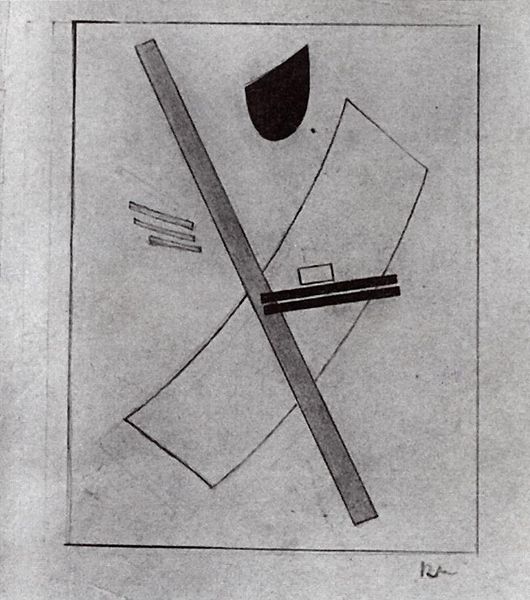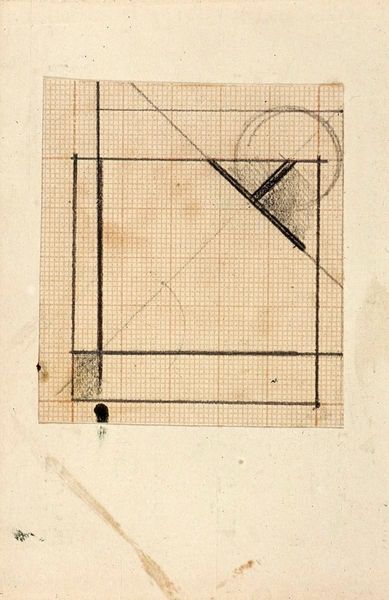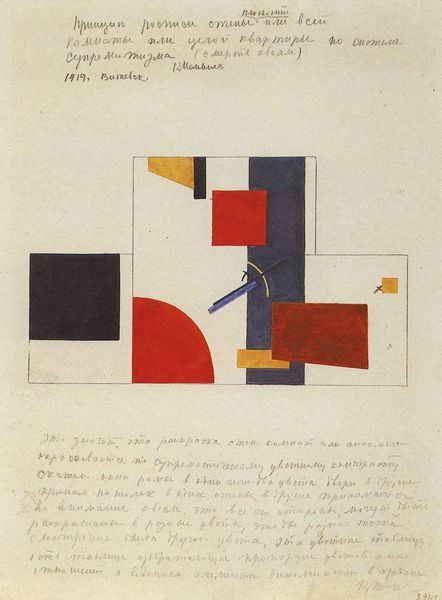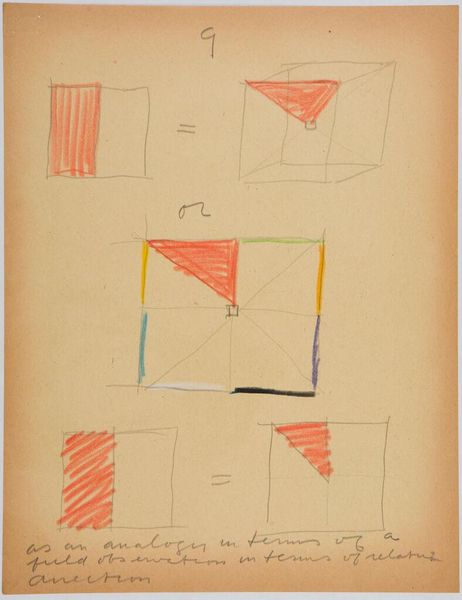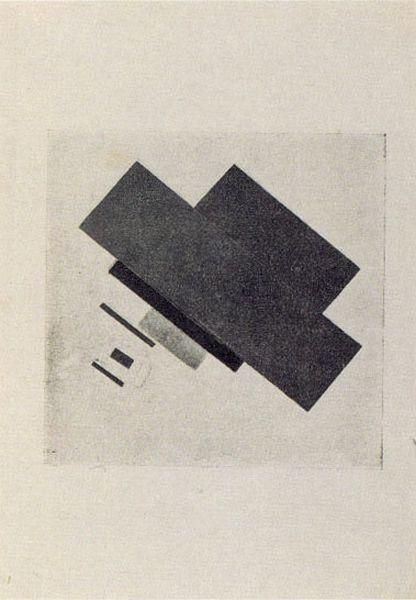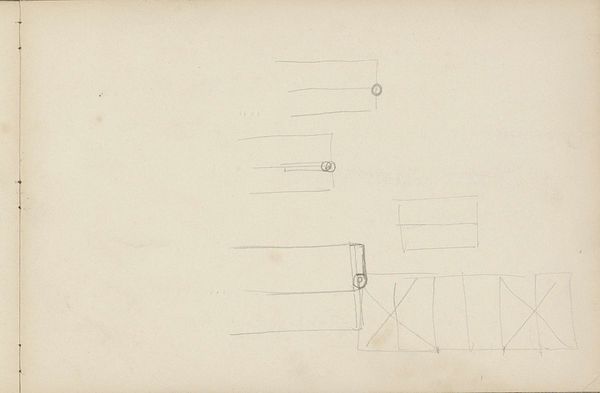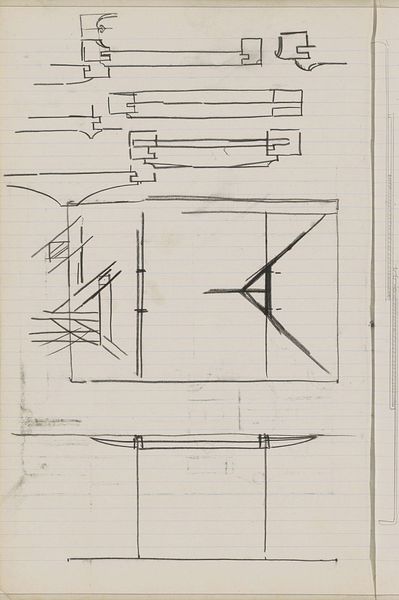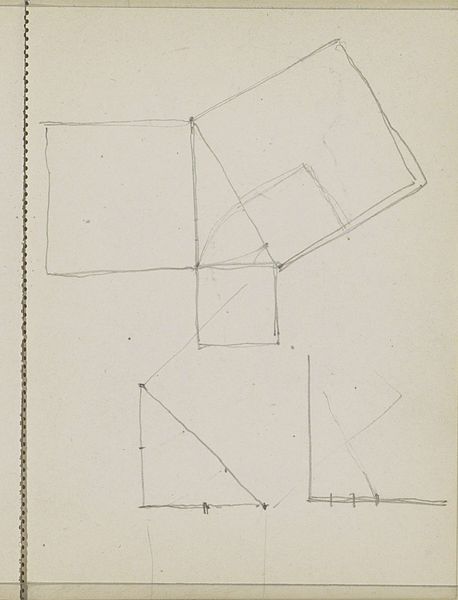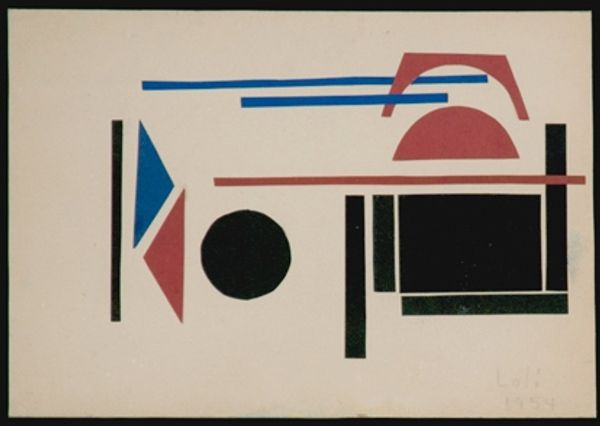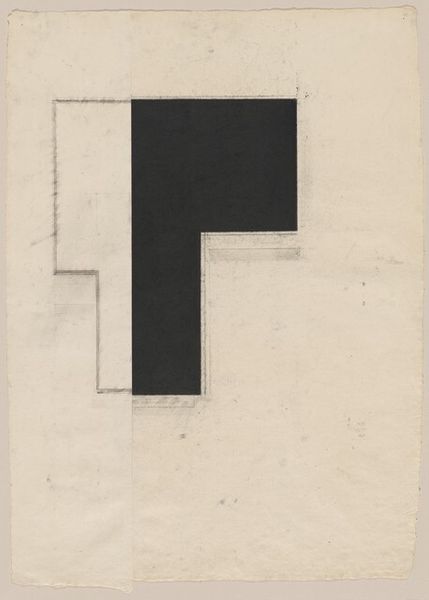
drawing, paper
#
drawing
#
paper
#
geometric
#
abstraction
#
line
#
modernism
#
suprematism
Dimensions: 24.8 x 33.8 cm
Copyright: Public domain
Curator: Kazimir Malevich's "Speakers on Tribune," created in 1919, showcases a striking arrangement of geometric forms rendered with drawing on paper. The interplay of basic shapes is captivating, to say the least. Editor: It strikes me immediately as incredibly stark, almost confrontational in its simplicity. The bold red and black are arresting. Given its time, and given Malevich, there’s clearly a political dimension here. Curator: Absolutely. We can analyze it from a purely materialist point of view. The choice of readily available materials—paper and drawing implements—reflects the economic constraints of the era and perhaps a desire to democratize art-making. What was affordable, what was accessible, what facilitated production at scale during revolution? Editor: And considering that context further, the Suprematist vocabulary feels almost like revolutionary symbols distilled to their purest essence. The positioning of shapes and the interplay of red and black perhaps signal to a broader societal and ideological conflict happening at the time. The stark shapes feel like voices amplified and contending for space. Curator: I find it compelling how Malevich limits his palette, reducing representation to essential geometric elements. It begs the question, what industrial processes or visual rhetorics were available to Malevich at the time he conceived of this and the relationship it bears to craft and industry of revolutionary propaganda? Editor: Well, consider this. We’re emerging from the throes of World War I, witnessing the rise of Bolshevik power. Malevich, like many avant-garde artists, sought a radical break from the past, to forge a new visual language that mirrored this societal shift. Curator: So, it's also about rejecting ornamentation. Editor: Precisely, that’s what the language and symbols sought to do, speaking instead to revolutionary purpose and a rejection of aristocratic values. A society of basic parts functioning harmoniously towards a common goal? Curator: When seen within the frame of industrialization that Malevich was inspired by. It’s this interplay of mass production of visual elements with their hand-crafted articulation that gives the image so much energy. It provides a vital key for understanding material, making, and politics during a complex moment. Editor: And on closer inspection, the subtle nuances in the lines—the slight imperfections in the shapes themselves—speak to the human hand behind the drafting. Curator: Ultimately, "Speakers on Tribune" speaks volumes about the fusion of process and purpose that was defining the artistic discourse during that pivotal historical moment. Editor: And it serves as a potent reminder of the ongoing dialogue between abstraction, social change, and artistic expression.
Comments
No comments
Be the first to comment and join the conversation on the ultimate creative platform.
